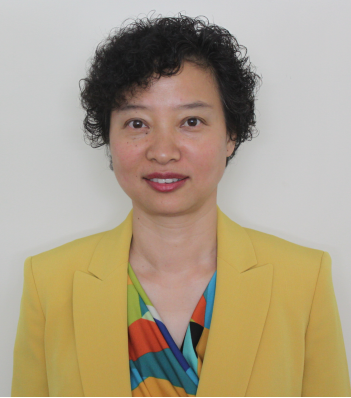
The information about the Keynote Speakers of MEDLIFE2015 is as follows, which will be updated regularly.

Biography: Dr. Jun Zhu received his PhD from Fukui Medical University, Japan in 1998 and completed his postdoctoral training at University of Kentucky in 2006. Dr. Zhu began his tenure-track appointment as an Assistant Professor in department of Drug Discovery and Biomedical Sciences (DDBS), College of Pharmacy, University of South Carolina (USC) in August 2009. He is currently an Associate Professor with tenure in the DDBS at the USC.
Dr. Zhu’s research aims toward finding solutions to a newly recognized challenge in treatment for HIV-associated neurocognitive disorders (HANDs). For a long time, the idea of the HIV virus crossing the blood-brain barrier was not even considered, but it’s now clear that HIV-1 viral proteins are released in the brain, where they disrupt normal brain functions. About one-half of HIV-1-positive individuals suffer from HAND, which dramatically affects memory, learning, decision-making, planning, and overall quality of life. Drugs of abuse, such as cocaine, have been shown to exacerbate the severity of HAND. HAND is associated with HIV-1 viral proteins, which are present in the brain of HIV-1-infected patients. HIV-1 transactivator of transcription (Tat) protein is thought to inhibit neuronal communication by acting directly on the human dopamine transporter, a membrane protein in the brain responsible for pumping the dopamine back into the cytosol and terminating dopamine signaling during neurotransmission.Dr. Zhu has established a National Institutes of Health (NIH)-funded research project to develop advanced approaches that integrate computational modeling with molecular pharmacology to investigate how cocaine and Tat work to create binders that derail neuronal communication in the brain. Dr. Zhu’s research has recently been highlighted in the field of HIV research by Nature Chemical Biology. The ultimate goal is to develop neuroprotective drugs, which can help HIV patients recover their neurological function.
Dr. Zhu’s laboratory also is exploring new theories about why some people may be more predisposed to addiction than others, and whether preemptive treatments could stop people from becoming addicted in the first place. Tobacco use is the number one preventable cause of death in the United States. This project is to study how environmental factors, through modulation of small RNAs and intracellular signaling, reduce nicotine’s rewarding effects. This research project will provide insights into impact of a unique microRNA regulation in drug rewarding, and has a high impact in the field of drug abuse research.
Topic: Impact of prefrontal microRNA-221: Vulnerability to nicotine dependence.
Abstract: Environmental enrichment alters susceptibility in developing drug addiction. We have demonstrated that rats raised in an enriched condition are more sensitive than rats raised in an impoverished condition to nicotine-induced activity, and this is associated with alterations of phosphorylated extracellular signal-regulated kinase 1/2 (pERK1/2) within the prefrontal cortex (PFC). This study determined the impact of microRNA-221 in the prefrontal on pERK1/2 and the enriched environment-dependent behavioral changes in response to nicotine. A microRNA array was conducted to profile microRNA expression in the PFC of these animals in response to repeated nicotine (0.35 mg/kg, s.c.) administration. microRNA-221 in the PFC, nucleus accumbens, and striatum was further verified by quantitative real-time PCR. Lentiviral-mediated overexpression of microRNA-221 in PC12 cells and the medial prefrontal cortex was performed to determine the effects of microRNA-221 on nicotine-mediated pERK1/2, phosphorylated cAMP response element-binding protein (pCREB), and locomotor activity.microRNA-221 was profoundly upregulated in the PFC but not in nucleus accumbens and striatum of enriched condition rats relative to impoverished condition rats following repeated administration of nicotine. Overexpression of lentiviral-microRNA-221 attenuated nicotine-induced increase in pERK1/2 in PC12 cells. Lentiviral-microRNA-221 overexpression in the medial prefrontal cortex further increased locomotor activity in impoverished condition but not in enriched condition rats in response to repeated nicotine administration. Accordingly, lentiviral-microRNA-221 attenuated nicotine-induced increases in pERK1/2 and pCREB in the medial prefrontal cortex of impoverished condition but not enriched condition rats.
These findings suggest that environmental enrichment, via upregulation of prefrontal microRNA-221 expression, suppresses the nicotine-induced activation of ERK and CREB signaling pathways, which provides new mechanistic insights into understanding how, at both the neurobiological and behavioral levels, environmental enrichment reduces nicotine addiction.
This research was supported by grants from the National Institute of Health (DA035714, DA024275, and DA026721) and the Award of the South Carolina INBRE Bioinformatics Pilot Project Program.

Biography: Dr. Liju Yang is currently an
associate professor in the Department of Pharmaceutical Sciences and
the Biomanufacturing Research Institute and Technology Enterprise
(BRITE) at North Carolina Central University (NCCU). She received her
B.S. degree in Chemistry from Hangzhou Teachers College and M.S.
degree in Analytical Chemistry from Hangzhou University, China, in
1991 and 1996, respectively. She received her Ph.D. degree in
Biological and Agricultural Engineering from the University of
Arkansas in Dec. 2003, and did her postdoctoral research at
University of Arkansas and the School of Electrical and Computer
Engineering at Purdue University. She joined BRITE at NCCU as an
Assistant Professor in Feb. 2006, and promoted to tenured Associate
Professor in 2012.
Her current research focuses on two areas:
(i) the development of novel biosensors, biochips, and microdevices
for applications in food safety, drug discovery, and biomedical
diagnostics; and (ii) Nanomaterials interfacing with biological
entities. Her research has been funded by several Federal Agents,
including the National Science Foundation (NSF), the National
Institute of Health (NIH), the Army Research Office (ARO), and the US
Department of Agriculture (USDA). She has published 60 peer-reviewed
journal articles and 3 book chapters, and has given multiple invited
talks and numerous conference presentations. She is a member of
American Chemical Society (ACS), Electrochemical Society (ECS), and
the Institute of Biological Engineering (IBE).
Topic: Label-free Impedance for Cellular Analysis: From 2D to
3D Cell Cultures
Abstract: Electrical impedance spectroscopy (EIS) enables
direct analysis of cellular activities occurring on an electrode
surface by measuring the induced capacitance and/or resistance
changes by cells attached on the electrode. Particular, the technique
enables the analysis of cellular activities of living cells in a
label-free and non-invasive manner. This paper summaries the research
activities in our group using the label-free impedance technique for
cellular analysis for applications in cancer cell study and drug
screening, as well as the potential of incorporation of 3 dimensional
(3D) cell cultures in such technique.
We first demonstrated the
use of real-time impedance technique to study the cellular activities
of oral cancer cells including cell proliferation, adhesion,
spreading, and apoptosis induced by drug treatments. We then used
impedance spectroscopy to analyze the resistive and capacitive
components induced by oral cancer cells on microelectrodes. Next, we
explored the use of the impedance technique to distinguish oral
cancer cells from normal oral epithelial cells in label-free manner
by studying the kinetics of cell spreading and attachment of the two
cell types. This is based on the changes occurring during
transformation from non-cancer cells to cancer cells, which include
changes in the cellular morphology, structure, and functions that may
result in alterations in cancer cell properties that could be
detected by the EIS.
In drug discovery, such impedance
technique has become an important tool by providing a simple, fast
and cost-effective approach to avoid large-scale and cost-intensive
animal testing. However, to date, almost all cell-based assays use
traditional 2 dimensional (2D) monolayer cells cultured on flat and
rigid substrate. Although the time-honored 2D cell culture has proven
to be a valuable method for cell-based studies, its limitations have
been increasingly recognized. In in vivo environment, almost all
cells are surrounded by other cells and extracellular matrix (ECM) in
a 3D fashion. As a result, 2D cell culture tests sometimes give
unsatisfactorily misleading and non-predictive data for in vivo
responses. Three-dimensional (3D) tumor cell culture provides a more
physiologically relevant and realistic environment to human tumors as
compared to cells grown in traditional monolayer 2D culture. In this
regard, we established the conditions for growing cancer cells into
3D spheroids using different cancer cell lines, investigated the
cellular responses of these cells in 3D culture to different
anti-cancer drugs as compared to those in 2D culture, and examined
the difference in expressions of drug-action related factors in 3D
and 2D cultures. Interestingly, our data showed the influence of
extracelluar matrix to cell proliferation rate in 2D and 3D cultures
varied with cancer cell types. The relative sensitivity of cellular
response to anticancer drugs were found cell type- and drug
mechanism- associated. Matrix for 3D cell growth also played a role
for the variation in cellular responses. Considering all these
factors, the incorporation of 3D cell cultures with impedance
techniques opens a way to improve label-free cellular analysis to be
more predictive for in-vivo tests.

Biography: Dr Zhou leads the Pregnancy and Early Childhood Nutrition Research Program at the School of Agriculture, Food & Wine, University of Adelaide and is an affiliate Senior Research Fellow at the Women's & Children's Health Research Institute and the South Australian Health Medical Research Institute, Australia. Dr Zhou received her PhD in Nutrition and Health from the University of Adelaide in 2005. Prior to completing her PhD, she was an obstetrician (qualified in China) and a clinical Dietitian (qualified in Australia). Dr Zhou’s research has been focused on nutritional interventions in pregnancy and early childhood with the aim of improving pregnancy outcomes and the long term health of mothers and children. Her special research interests include: 1) Micronutrients and fatty acid in reproductive health and childhood growth and development; 2) Strategies to enhance the nutritional quality of foods and improve population health; 3) Translation of research findings to clinical practice and public health policy. Dr Zhou has secured more than $10 million in funding as a chief investigator over the last 5 years including three grants from the National Health and Medical Research Council (NHMRC) of Australia.
Topic: Nutrition in pregnancy and growth and development of offspring
Abstract: Since the ‘Fetal origin of adult disease’ was hypothesized (Barker’s hypothesis) in the 1980s, there has been extensive research in the area of early life nutritional programming. Although the mechanisms by which nutrition during pregnancy programs health later in life are not fully understood, it is well recognized that nutrition during preconception and pregnancy has profound impacts on the growth and development of the fetus and the long term health of the offspring. The development of the fetus and placenta during pregnancy, as well as the need for expansion of the blood volume to facilitate nutrient transfer from the mother to the fetus, results in additional nutritional requirements. Deficiencies in key micronutrients such as iron, folate, iodine and long chain polyunsaturated fatty acids have been linked to impaired growth and neurodevelopment in the offspring. The consequences of nutrient deficiencies during pregnancy vary depending on the role of the specific nutrients and the timing of the deficiencies. The first trimester is generally the most critical period of fetal development due to the rapid cell differentiation and the development of the embryonic system. Deficiencies which occur during a critical period of the development of certain organs and tissues can lead to irreversible changes to their structure and function, and may result in an increased risk of non-communicable disease in the offspring. Other factors such as maternal obesity and weight gain in pregnancy can also impact on the long term health of the offspring. This paper provides an overview of the effect of maternal nutritional and health status in pregnancy on the growth and development of the offspring.

Biography: Dr. Chen Bin is now a full professor and vice director in State Key Laboratory of Multiphase Flow in Power Engineering, Xi’an Jiaotong University. He received his Ph.D in 2002 from Xi’an Jiaotong University, China. Afterwards, he worked at the National Maritime Research Institute of Japan as Postdoctoral Research Fellow of Japan Society for the Promotion of Science from 2002 to 2004.
For more than a decade, Dr. Chen has devoted his efforts to the research of heat transfer in laser dermatology (vascular malformation and pigmentary lesions), in particular with the photon propagation and energy deposition in the laser treatment of Port Wine Stain. He is currently developing Monte Carlo method, bio-heat mass transfer model, as well as conducting animal experiment on thermal damage of blood capillary by 595nm and 1064nm laser, and Cryogen Spray Cooling in laser treatment of skin disease.
Recently, he severed as member of World Academy of Science, Engineering and Technology; member of Editorial Board for: Journal of Procedural Dermatology, Journal of Clinical, Experimental and Cosmetic Dermatology, Comprehensive Journal of Science and Medicine, Journal of Clinical Dermatology and Therapy, American Journal of Heat and Mass Transfer.
Topic: Monte Carlo method for the laser-tissue interaction with application in laser dermatology
Abstract: Predicting light propagation in skin tissues is of theoretical importance to improve the clinical efficacy in laser treatment of dermatosis, for example, port wine stains (PWS). The Monte Carlo (MC) method is a versatile and easy-to-parallel approach that has great potential in biomedical optics. In this method, features of a sizeable number of photon packets are collected to build the statistical behavior of light transportation. With regard to light propagation in geometrically complex biological tissue, voxel-based Monte Carlo (VMC) has attracted much attention, in which the model geometry is represented by a group of 3D stacked hexahedron voxels. Currently, researchers believe that VMC exhibits good adaptability for complex tissue models. However, tissue interface (especially curved boundary, such as vessel wall) is approximated by artificial serrated polygonal boundary, leading to the deviation of photon reflection and refraction.
In order to improve the accuracy of VMC, a criteria to determine the voxel size and photon number was proposed. To adapt the complex tissue structure, a body-fitted tetrahedron-based MC (TMC) method was developed to improve smoothness of tissue interface shape. Results show that the energy deposition error by TMC in the interfacial region is one-tenth to one-fourth of that by VMC, yielding more accurate computation of photon reflection, refraction, and energy deposition. Simulation of light absorption in tissues embedded with two cross-bridge vessels showed that the energy shadow is also larger than the geometrical shadow, since the scattering is more important than transmission for deep vessel.
By MC methods, light propagation and energy deposition in blood vessel is simulated to compare the pulsed dye laser (PDL) at wavelength of 595nm and Nd:YAG laser at wavelength of 1064nm. Different mechanisms of photothermalysis by these lasers are revealed and dual-wavelength laser therapy strategy is proposed for the better treatment of PWS.